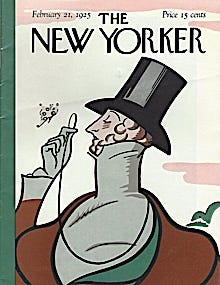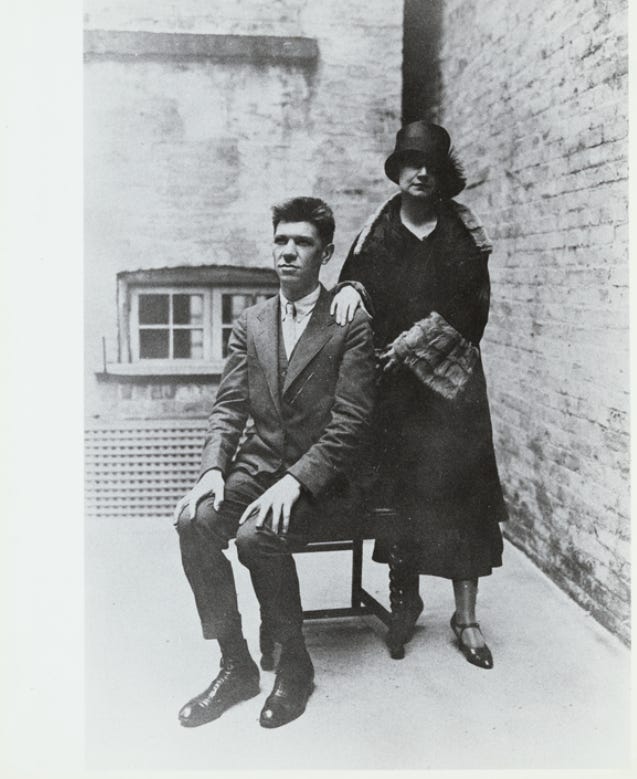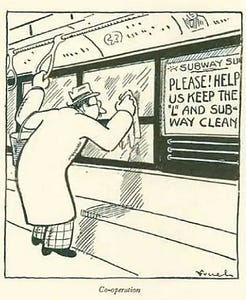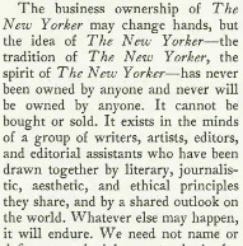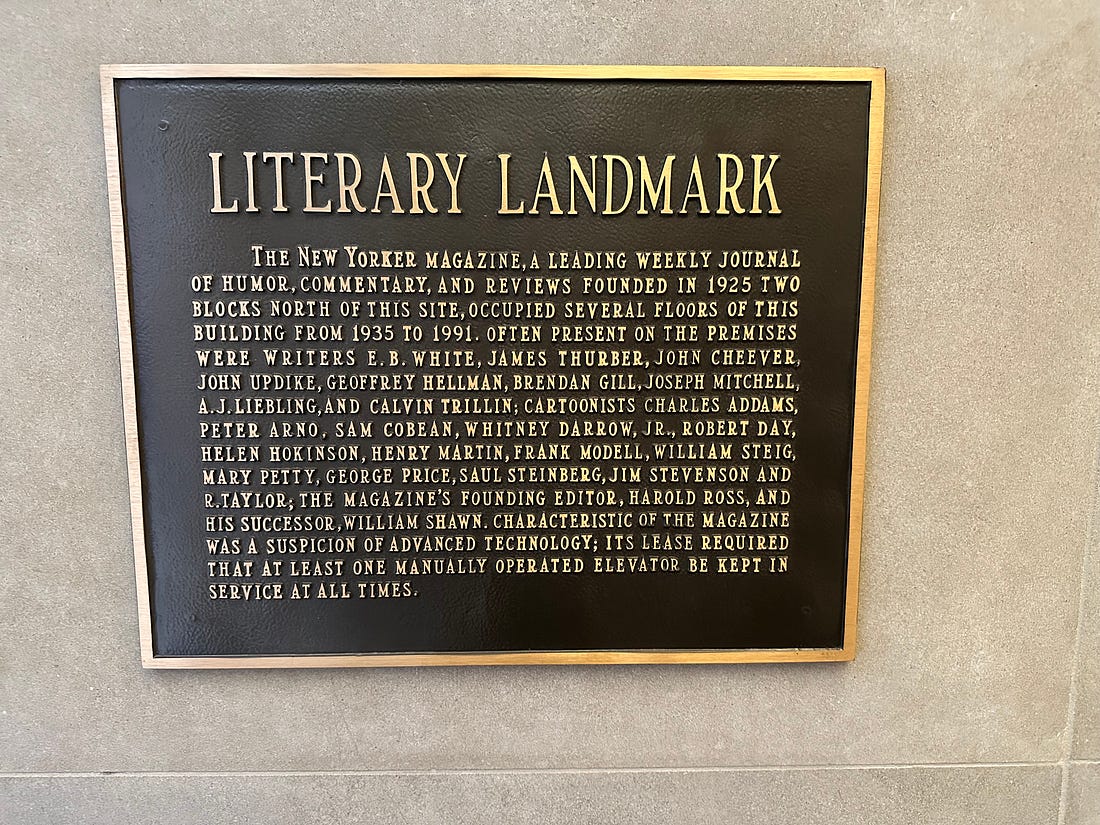|
The New Yorker magazine appeared on the newstands for the first time 100 years ago this past week. The first issue was dated February 21, 1925.
I won’t go into a whole history here (even if I were capable!), but it has been such an influential publication in its lifetime, I wanted to honor the milestone birthday. Plus, it has been my professional “home” for 46 years, and I love the magazine. It was a dream come true to sell a cartoon to them in 1979, and I have been honored to be included all these years. I even met another New Yorker cartoonist because of the publication, and we built a life together because of this magazine.
This photo above of the founders Harold Ross and Jane Grant (who happened to be married), is so wonderful. Ross became the editor when the publication started in 1925, Grant was the primary bread-winner of their household and she helped raise money to finance their dream. Ross would carry the mockup of The New Yorker wherever he went to try and convince anyone who would listen what a great idea it was.
It was a great idea.
It has come a long way since its days as fledgling humor rag and now is one of the most repected publications in the world. The New Yorker always had drawings, which were the star of the show from the beginning. ANd still are, in so many ways. How many times do people tell me they read the cartoons first (and often nothing more)?
But the magazine almost didn’t make it in those first few months, sales were abysmal. It was being bankrolled by Raoul Fleischmann (of yeast making fame), and he was ready to pull the plug. One day in midtown, Ross and his team, including the magazine’s lawyer, John Hanrahan, were walking and discussing ending publication. Hanrahan overheard this, and said:
“I can’t blame Raoul for a moment for refusing to go on, but it’s like killing something that’s alive.”
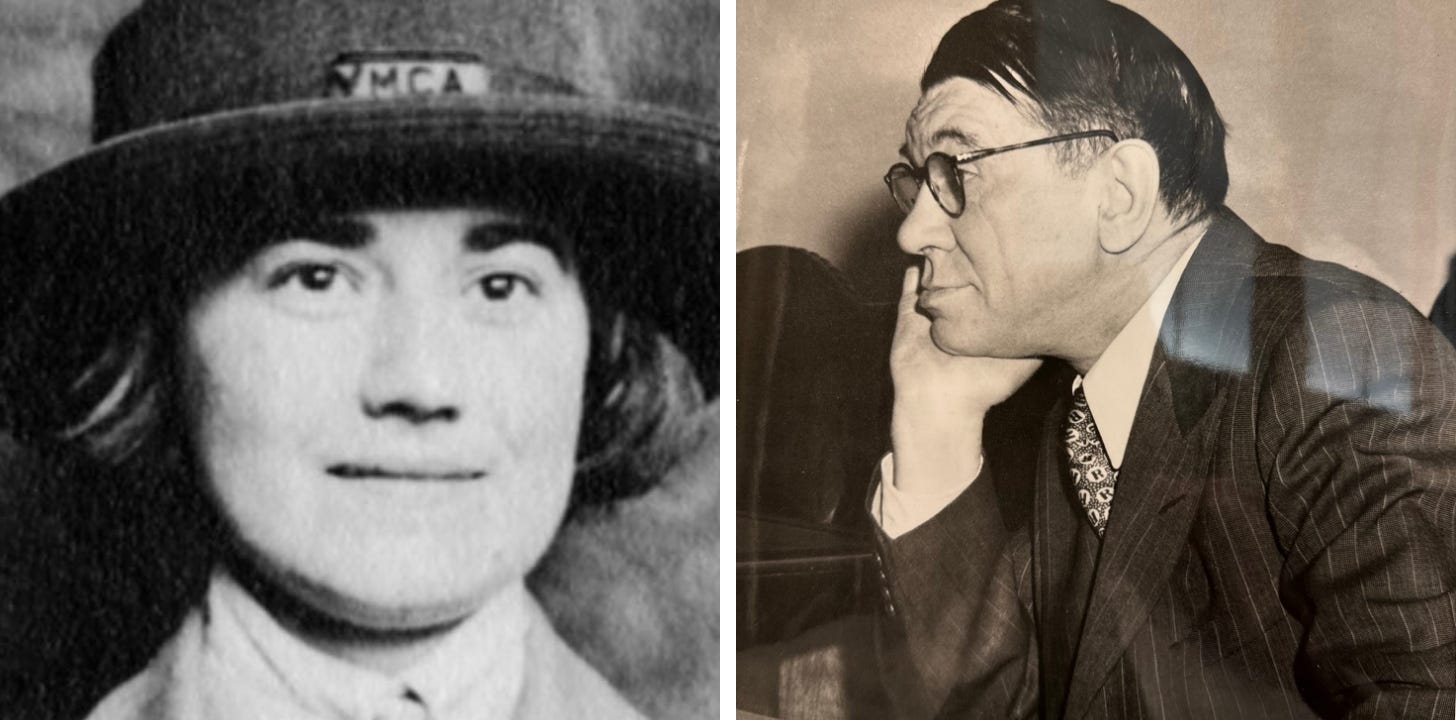
Since Ross, The New Yorker has been steered by four senior editors (and 5 art /cartoon editors who fascilitate the selection of art). It remains as vibrant and important a publication as in the year started.
In the issue of April 22nd, 1985, William Shawn, the second Editor after Ross, wrote the following missive, declaring editorial independence. It was on the ocassion of the sale of the magazine to Si Newhouse, no longer being a privately-held company by the Fleischmann family.
“The business ownership of The New Yorker may change hands, but the idea of The New Yorker—the tradition of The New Yorker, the spirit of The New Yorker—has never been owned by anyone and never will be owned by anyone. It cannot be bought or sold. It exists in the minds of a group of writers, artists, editors, and editorial assistans who have been drawn together by literary, jorunalistic, aesthetic, and ethical principles they share, and by a shared outlook on the world. Whatever else may happen, it will endure.”
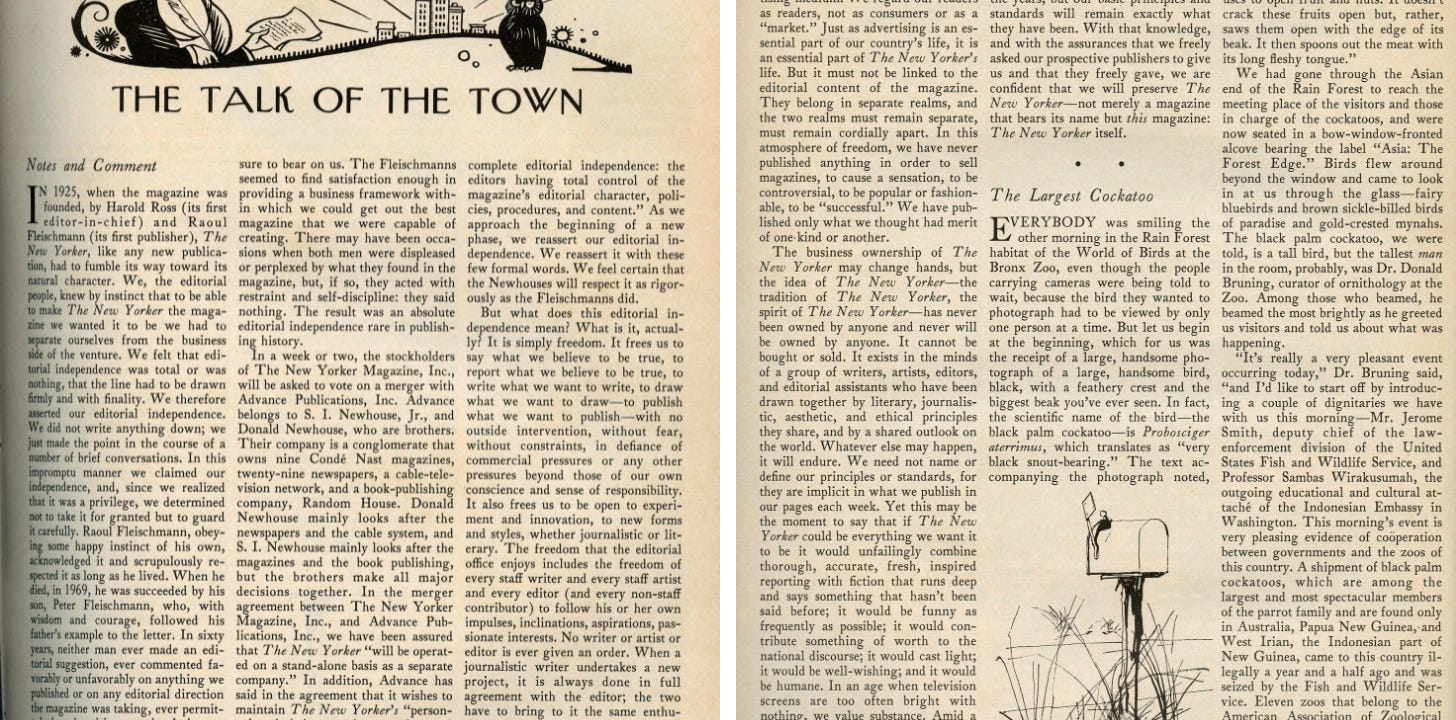
Under current editor David Remnick, The New Yorker continues its tradition of remaining fiercely independent. It’s as important, if not more so, in our current political climate.
Tonight, I was invited to go to the press preview of The New York Public Library’s exhibition celebrating this milestone. I can’t wait. I spent a year in their Special Collections, researching in The New Yorker Archives for my history, Very Funny Ladies: The New Yorker’s Women Cartoonists.
Speaking of independent journalism, I strongly suggest that you listen to (or read) this interview David Remnick did with the ACLU’s executive director, Anthony Romero. It lays out clearly what the ACLU is doing to counter Trump and what it looks like for the next months and years. It’s encouraging to hear all that they are doing and that they have a plan.
https://www.newyorker.com/podcast/the-new-yorker-radio-hour/the-aclu-vs-trump-20
Thanks for being here, see you tomorrow! I hope you have a good Friday.
